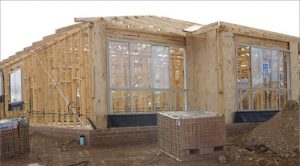Introduction
When it comes to Australian houses, there is a diverse range of construction materials used due to the country’s unique climate, geography, and cultural influences. From the traditional materials utilized by Indigenous Australians to the modern choices embraced by contemporary builders, the construction landscape has evolved significantly over the years. In this article, we will explore the various materials commonly used in Australian house construction, shedding light on their attributes, benefits, and environmental considerations.
1. Traditional Indigenous Materials
1.1 Mud and Clay
For thousands of years, Indigenous Australians employed readily available natural materials like mud and clay to build their shelters. These materials were found to be effective in providing protection from the elements and maintaining comfortable temperatures inside the structures. However, with the advent of modern construction techniques, the use of mud and clay has become less common, reserved mainly for cultural and historical preservation purposes.
1.2 Timber
Timber has been a fundamental building material for Indigenous communities across Australia. The availability of various native hardwoods allowed them to construct durable and sturdy houses using traditional building methods. Even today, timber remains a popular choice in modern construction, reflecting a harmonious blend of tradition and contemporary design.

2. Colonial Influence
2.1 Brick
With European settlement, the construction landscape in Australia saw significant changes. Bricks, made from fired clay, emerged as a prominent building material during the colonial era. Many historic buildings across the country, including iconic landmarks, were constructed using bricks, which offered durability and strength.
2.2 Stone
In areas where suitable stone was available, early settlers used this material to build houses. Stone houses showcased exceptional craftsmanship and stood as a testament to longevity and resilience. While stone construction is not as prevalent in modern times, it still finds application in niche architectural projects.
3. The Rise of Modern Materials
3.1 Concrete
The 20th century saw a rapid increase in the use of concrete as a primary building material in Australia. Its versatility, cost-effectiveness, and durability made it a preferred choice for constructing a wide range of structures, including houses. Concrete’s ability to withstand harsh weather conditions and its fire-resistant properties have contributed to its popularity.

3.2 Steel
Steel has become an integral component of modern Australian house construction. Its high strength-to-weight ratio, resistance to termites, and adaptability make it an ideal material for framing and structural support. Steel framing has gained popularity in residential construction due to its precision and ease of assembly.
3.3 Brick Veneer
While solid brick construction remains prevalent in some regions, brick veneer became a widespread alternative due to its cost-effectiveness. Brick veneer houses feature an internal timber or steel frame with an outer layer of bricks, providing a pleasing aesthetic while maintaining structural integrity.
4. Sustainable and Eco-Friendly Materials
4.1 Timber: Sustainable Forestry Practices
Timber continues to be favored in sustainable construction. Australian builders and homeowners increasingly opt for timber sourced from sustainably managed forests, promoting responsible environmental practices. https://citibuildconstruction.com.au/
4.2 Recycled Materials
The concept of using recycled materials in construction has gained momentum in recent years. Builders often incorporate reclaimed wood, bricks, and metal into their projects, reducing the demand for new resources and minimizing waste.
4.3 Earth-Friendly Insulation
Homeowners are showing a growing interest in eco-friendly insulation materials, such as cellulose, wool, and recycled polyester. These materials offer improved thermal performance and reduced energy consumption.
5. Regional Variations
5.1 Tropical North
In the tropical regions of northern Australia, where heat and humidity are significant concerns, houses are often constructed with lightweight materials that offer excellent ventilation. Timber and elevated houses are common to allow airflow and minimize the risk of flooding.
5.2 Arid Outback
In the arid regions of central Australia, materials that can withstand extreme temperatures and harsh weather conditions are preferred. Rammed earth construction and innovative cooling techniques are often employed in these areas.
5.3 Coastal Areas
In coastal regions, houses must be designed to withstand the corrosive effects of saltwater and cyclonic conditions. Steel-framed and weather-resistant materials are popular choices in these locations.
Conclusion
The materials used in Australian house construction have evolved significantly over time, reflecting the country’s rich cultural heritage and embracing modern sustainability practices. From the traditional Indigenous materials to the rise of modern construction elements, each choice has its unique advantages and contributions to the architectural landscape of Australia. As the country continues to grow and adapt, the use of eco-friendly materials and sustainable practices will undoubtedly shape the future of Australian housing, promoting a harmonious relationship between humans and their environment.
